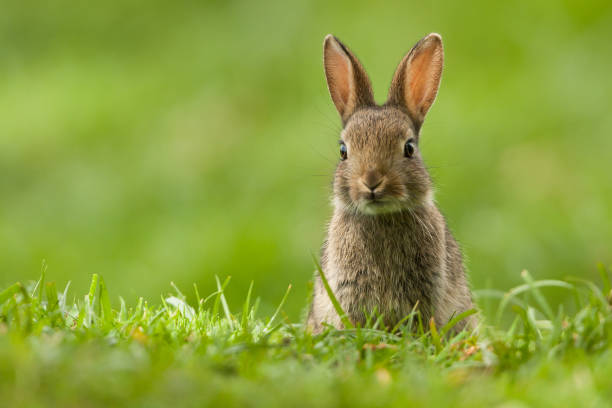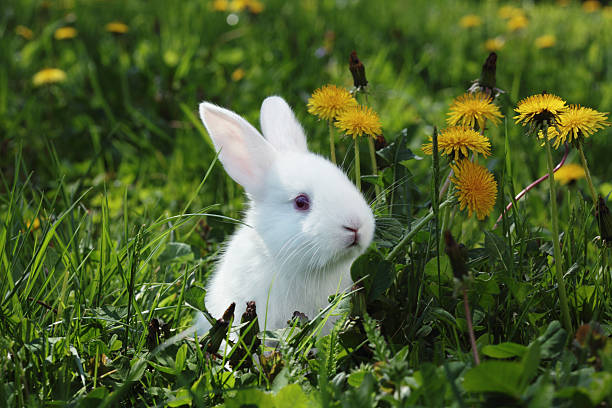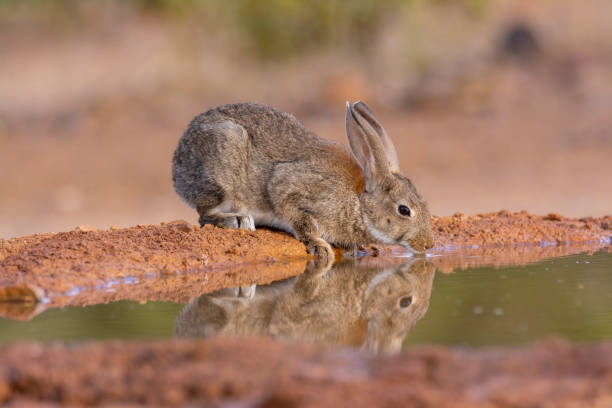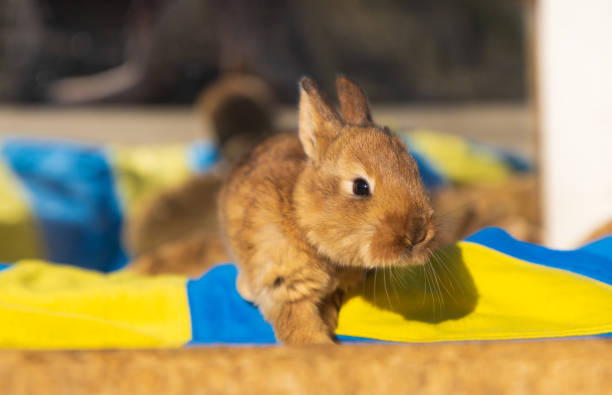Rabbit Care During Hot Weather
If your rabbit is showing signs of heat stroke (they are sluggish, confused and falling over frequently) seek help straight away. Move them to a cool area and provide plenty of shade.
Misting with cool water can be helpful, but don’t dunk or submerge them as this may shock their system. Also place a fan nearby but make sure it is not blowing directly on them.
Mist Their Ears
When it’s hot outside, misting your rabbits with cool water can help them stay cooler. They regulate their body temperature by releasing heat through their ears, so cooling them down can really make a difference. Just don’t get them soaking wet – you just want to lightly mist them to keep them cool.
You can also try putting some ice cubes in their water bowl to help it stay colder longer. Check and refill their water several times a day to ensure it is always fresh and cool.

If you are concerned that your rabbit may be overheating, pay close attention to their behavior and energy levels. Overheating can cause them to become sluggish and lethargic, and they might not be eating as much. If you notice this, you should call your vet immediately.
Another way to keep your rabbit cool is to give them a little extra shade in their enclosure. A tarpaulin or a sail-cloth placed over the roof of their run can offer some extra sun protection while still allowing air to circulate. This can be a good option for outdoor rabbits, as well as rabbits that live in the house.
Give Them Some Cool Places To Lie
Rabbits have very thick fur coats that can easily become uncomfortable in the summer sun. They also don’t pant like dogs to cool themselves and rely on you to monitor the heat, so be sure to provide plenty of shaded areas in their enclosures and provide them with soft, dry bedding – such as shredded paper or newspaper, and wood shavings (not pine) that are clean and hygienic.

Rabbit bedding should be changed frequently during hot weather to keep it dry and fresh. You can also add a few ice cubes to their water bottles or bowls during hot weather to help them stay hydrated. A rabbit drinks much more on average during a day when they’re feeling hot, so make sure their water bottle and bowls are always full and well-stocked with fresh, cold water.
If you have long-haired rabbits, consider giving them a summer haircut if they’re due for one anyway. This helps to thin out their thick fur coat and allows them to shed it easier in the heat. It also reduces the risk of fly strike, which happens when flies lay eggs in your rabbit’s warm and damp fur, resulting in maggots that can cause fatal wounds.
Place Some Fresh Water Near Them
Whether your rabbit is free-roaming in the garden or chilling indoors it’s important to provide them with fresh, cool water. Rabbits regulate their body temperature through their ears, so spritzing them with cool water can help to lower their temperature and it’s great for lop eared rabbits who are more susceptible to heat stroke. Make sure you don’t leave the rabbits with soaking wet ears though – this will lead to ear infections.
You can also give them some drops of water on their leafy greens if they’re struggling to stay hydrated. This will encourage them to eat their vegetables and give them some extra hydration. If you’re hand feeding your rabbit it can be helpful to gently but firmly hold them on their upper back to prevent them from kicking out their bottom when they’re trying to escape your hands (you can use your thumb on one side of their chest, your index finger between their front legs and the other three fingers on the other side).

Indoors you can help to keep the rabbits cooler by running a fan. Just be mindful not to point it directly at the rabbits and ensure all wires are kept out of reach from nibbling teeth. Another easy way to help them stay cool is to wet a towel, wring it out and then place it over the top of their cage. This will allow them to lie on the cool towel and help with evaporative cooling.
Run A Fan
Rabbits are herd animals that do best when in pairs or groups. They will thump with their rear feet to communicate and alert other rabbits of possible danger. They can also use this behavior to express annoyance. If you have a rabbit that does not get along with other rabbits, it is best to follow bonding procedures to ensure they do not fight.
A rabbit is a grazer that consumes primarily plant matter. They have a cecum, which is at the head of their large intestine and houses beneficial bacteria that break down and ferment cellulose from plants. This helps maximize the amount of nutrients they can absorb. Because of this, they often eat their own feces (called coprophagy) to gain any nutrients that their digestive system may have missed the first time around.
In addition to hay and grass, rabbits are opportunistic feeders and will also eat root vegetables, fruit, seeds and tree bark. They are herbivores, which means they cannot process meat or dairy. This is why it is so important to feed them a high quality hay and fresh, non-dairy protein source such as timothy, alfalfa, or a dark leafy green, such as kale or swiss chard.
As prey animals, rabbits are naturally wary of loud noises and sudden movements. They are also not great fans of hands reaching down at them from above, especially if they are being held in a hand trancing position (placing the rabbit on their back and gently strokes their back legs). If you see your bunny acting unusually, it is probably a good idea to take them to a vet that has experience with bunnies.

